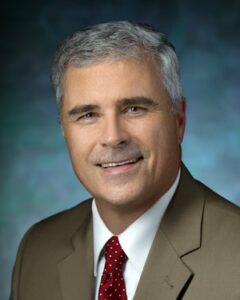Takeaway
Providing humanistic, equitable care benefits patients, medical practitioners, and society. Reminding ourselves that we are all in this together may help decrease stigma and bias in clinical settings.

Passion in the Medical Profession | November 19, 2024 | 2 min read
By Richard Schaefer, MD, MPH, Johns Hopkins Medicine
The autobiography of Dr. Augustus White, III, “Seeing Patients: A surgeon’s story of race and medical bias,” is an inspiring account of resilience, perseverance, and service to patients, profession, and nation. After medical school, White completed orthopedic surgery training, was an Army surgeon in Vietnam, and became a respected spine surgeon and a leading academician. His many accomplishments are remarkable, made even more so by the racism and barriers to advancement he experienced as an African American.
He was inspired by Dr. William Osler, who said that “imperturbability” or “calmness amid storm” was an important quality for a physician. White found this statement to be particularly relevant when serving in the complex environment of Vietnam. He lived by Osler’s advice to “Do today’s work today.”
An orthopedic surgeon myself, I took particular interest in reading about Dr. White’s career as well as that of Drs. John Feagin and Tony Rankin. All three of these orthopedic surgeons have been important role models for me.
The book provides wonderful vignettes and wisdom about connecting with patients. A particularly moving passage in the book was when White was reflecting on operating upon severely wounded soldiers in Vietnam. He told himself that “For some of them you’re going to be the last human being they will ever see or ever talk to . . . You’ve got to take some time; you’ve got to look them in the eye and interact. You must talk to this fellow human being who’s lying there in shock and fright.”
White also describes how stereotyping and unconscious bias contribute to health disparities. Patients may receive inferior treatment based on their race, ethnicity, gender, age, sexual identity, body weight, and other differences. He writes of an enlightening chance conversation on an airplane with a tattoo model who hated going to doctors because they judged and treated her so poorly. Something clicked. He wrote that seeing someone as “other” may “trigger reactions from doctors that were neither sympathetic nor especially compassionate. And those visceral reactions were very likely to affect the medical care they provided.”
The book also tells us how financial and time pressures in medicine can result in biased care, and a loss of an idealized “sense of humane purpose” in practitioners. He encourages us to recover that idealism and strive to provide egalitarian care for a “win, win, win.” Not only do the patient and clinician benefit, but also society, as practicing humanitarian medicine can provide “a model for the spirit of community and mutual care that we so urgently need, and so lack, in our increasingly splintered and sectarian world.”
At speaking engagements, White always begins by addressing his audience as “My fellow humans.” Keeping those words in mind, perhaps using it as a mantra of sorts, and considering our patients as “fellow humans” can be a reminder for us to check our biases and provide empathetic care.
This piece expresses the views solely of the author. It does not necessarily represent the views of any organization, including Johns Hopkins Medicine.

